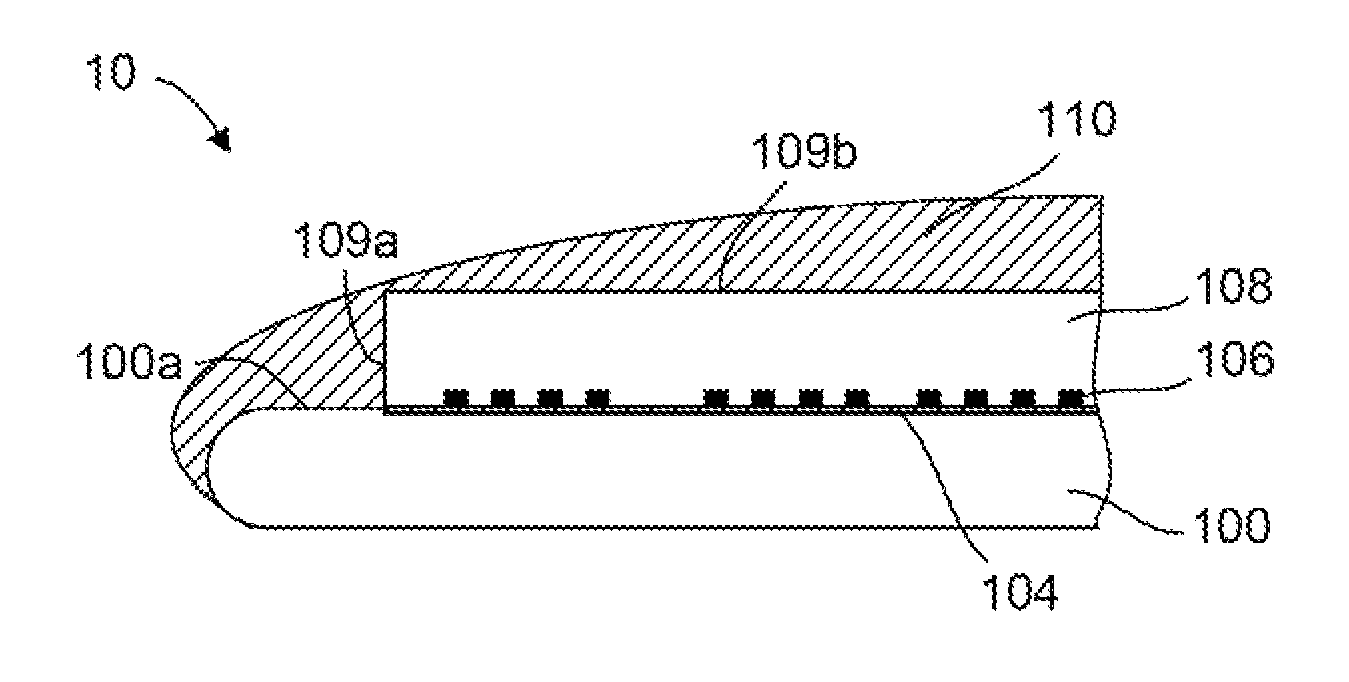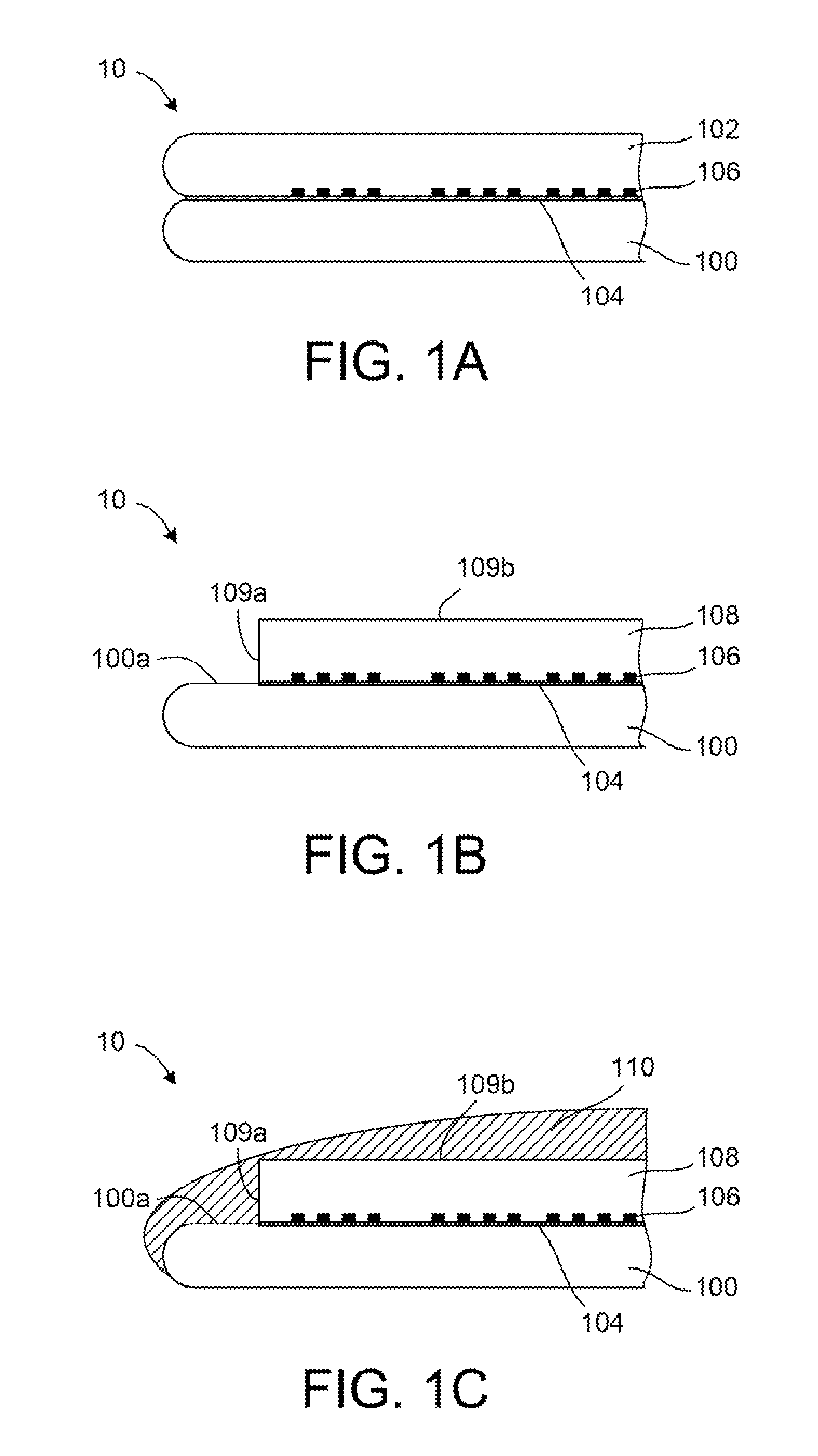Method for thinning a bonding wafer
a bonding wafer and thinning technology, applied in the field of semiconductor/solid-state device manufacturing, can solve the problems of subsurface damage on the prime surface of the wafer, unsupported area beyond the bonding layer becoming problematic, and the top wafer thinned down to microns of thickness
- Summary
- Abstract
- Description
- Claims
- Application Information
AI Technical Summary
Benefits of technology
Problems solved by technology
Method used
Image
Examples
Embodiment Construction
[0013]Methods for thinning wafers, for example wafers containing Through Silicon Vias (TSV), are disclosed in various embodiments.
[0014]FIG. 1A schematically shows a structure 10 containing a handling wafer 100 coupled to a silicon bonding wafer 102 using a bonding layer 104. The handling wafer 100 and the silicon bonding wafer 102 may be silicon wafers having a radius of 100 mm, 150 mm, 225 mm, or larger. Furthermore, the handling wafer 100 and the silicon bonding wafer 102 may each have total thickness of approximately 1 mm. The silicon bonding wafer 102 further contains a plurality of metal filled vias (holes) 106 in contact with the bonding layer 104. The metal filled vias 106 can, for example, have a diameter between about 1 micron (micron=10−6 meter) and about 50 microns, for example about 25 microns or about 40 microns. In one example, the metal filled vias 106 may have a diameter of about 25 microns and a height of about 25 microns. In some examples, the metal filled vias 10...
PUM
 Login to View More
Login to View More Abstract
Description
Claims
Application Information
 Login to View More
Login to View More - R&D
- Intellectual Property
- Life Sciences
- Materials
- Tech Scout
- Unparalleled Data Quality
- Higher Quality Content
- 60% Fewer Hallucinations
Browse by: Latest US Patents, China's latest patents, Technical Efficacy Thesaurus, Application Domain, Technology Topic, Popular Technical Reports.
© 2025 PatSnap. All rights reserved.Legal|Privacy policy|Modern Slavery Act Transparency Statement|Sitemap|About US| Contact US: help@patsnap.com



